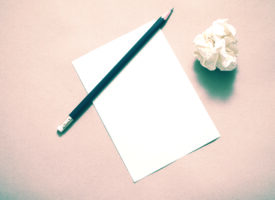Dear Editor: Here is my wonderfully written article that I know you will want the privilege of publishing in your magazine. Mail my check to, 123 Main Street, Smalltown USA 12345.
Could you ever imagine sending in a query letter like that? When I was the editor of a writers magazine I received queries like that or queries for articles that showed the writer had never even heard of the magazine let alone read a copy. It was obvious they were blind-sending query letters to any and every magazine he found.
Before you ever send a query letter to an editor, you need to first READ the magazine. If you’re writing an article about mountain climbing don’t send it to a writer’s magazine or a tech magazine. Common sense dictates you’d send it to a mountain climbing or a sports magazine, right? Unfortunately common sense doesn’t always seem to rule the wanna-be-published writer’s thoughts.
Here are some things a query letter can do for you and your career:
- It proves to an editor that you are qualified to write the piece you propose
- It shows the editor, at a glance, that you can actually string together two sentences and use proper grammar
No matter what market you are targeting and whether they want hard copy queries and submissions or will accept submissions via email, you still want to be professional in all of your dealings with an editor, from finding out his or her name to knowing what they publish.
When researching markets:
- Know the market you are targeting and target appropriately
- Read the magazine, order a sample copy
- Read and understand the writer’s guidelines for that specific publication
- Know which editor to target your query to — larger magazines have editors for different departments
Be professional and make a good first impression:
- Even in an email, use a professional format — date, editor’s name, address, etc.
- No spelling or grammar errors
- If you aren’t sure of the gender of the editor: Chris Smith, don’t use Mr. or Mrs. simply use Chris Smith.
- Single space the letter (not double spaced like your article submission should be)
- Include all of your contact information: name, address, email, telephone number
- Single-space your paragraphs and double-space between paragraphs.
- Include an SASE if you’re mailing a hard copy
Grab the editor’s attention:
- Introduce your article in the first paragraph of your query
- Make it interesting, by using a “hook” in your query
- Use a legible font
- Make the query specific. Don’t say, “I’d like to write an article about herb gardening.” Say instead, “I have an idea of an article on how to grow basil and chives in a most unique manner suited for city dwellers.”
- Keep it short — one page max for your query letter
- Let the editor know the length of the piece and whether it will have photos
Be persuasive:
- If you have writing samples, include them or if they are online, include links
- If you have credentials that show why you’re the best writer for the piece, let the editor know that
Your query letter is your job interview with a potential employer (the editor). Keep in mind that writing query letter can take as long as writing a synopsis for a novel and maybe it should. You have one page and a few lines of text to grab the attention of the editor to whom you’ve sent your article idea, take time to make it shine
About the Author:
Robbi Hess is a writer/editor/blogger with more than 20 years experience as a writer on assignment. She is a professional writer on assignment who has served on the staff of newspapers, magazines and with book publishers. You can see more about her at http://www.robbihess.com or http://www.lipsticking.com


